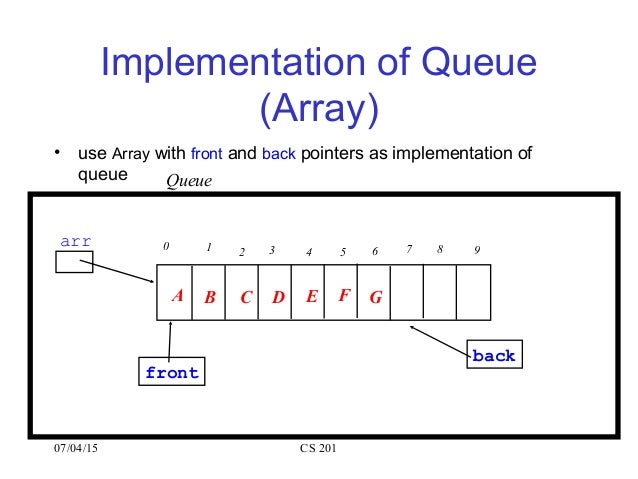

We will see that the middle element is always the front element of the deque. If after the pop operation, the size of the deque is less than the size of the stack, we pop an element from the top of the stack and insert it back into the front of the deque so that size of the deque is not less than the stack. The pop operation on myStack will remove an element from the back of the deque. You may simulate a queue by using a list or deque (double-ended queue), as long as you use only standard operations of a queue. The number of elements in the deque stays 1 more or equal to that in the stack, however, whenever the number of elements present in the deque exceeds the number of elements in the stack by more than 1 we pop an element from the front of the deque and push it into the stack. The Queue implemented using linked list can. That means, queue using linked list can work for variable size of data (No need to fix the size at beginning of the implementation). The queue which is implemented using linked list can work for unlimited number of values. Insert operation on myStack will add an element into the back of the deque. A queue data structure can be implemented using linked list data structure. We will use a standard stack to store half of the elements and the other half of the elements which were added recently will be present in the deque. Method 2: Using a standard stack and a deque
#Linked list stack implememntation using two queues 261 code#
To complete the code first modify the existing signature of interface Stack in Stack.java as follows, no change required in interface's body. The interface Iterator we will implement by an inner class LinkedStackIterator to LinkedStack. The Iterator interface also declares a remove() method but we will not specify anything in its body. Queue Implementation Techniques As with the stack, the two most common implementation techniques for a queue are to use a linked list or to use an array. Generally, an iterator is an object of a class that implements hasNext(), and next() as they are declared in Iterator interface. As soon as we extend Stack interface by Iterable we have to add a new method iterator() to class LinkedStack that will return an object of type Iterator

Interface Iterable is already defined as part of. To make our Stack data structure iterable, we first extends the Stack interface by Iterable. And the class implements Iterator has to implement two methods: hasNext() (returns true if there are more items to process, false otherwise) and next() (returns an item from the collection). Any iterable collection has to implement an iterator() method that returns an Iterator object.

Java provides a special syntax of for loop (also called for-each loop) to process arrays and iterable collections. But, if you like to make the Stack a usual collection where you can iterate through the stack items, you should implement Iterable and Iterator interfaces as part of your LinkedStack implementation. Iterating through Stack Items - Stack Iteratorīy definition of stack data structure you would use it as a container where items are added to and removed from one end.

IsEmpty(): Returns true if stack is empty, false otherwise. Size(): Return the number of objects the stack contains right now. In addition to push() and pop() methods we can also define a few supporting but optional methods, such as, Pop(): Return the top object from the stack, and remove as well. The following methods we plan to implement as part of our stack implementation in Java using linked list. However, in linked implementation of stack we don't exactly require the top pointer because we will add an item at the beginning of the list and remove it from the beginning of the list.Ī stack by definition supports two methods, one is push for adding objects to the stack, and second, pop for removing the latest added object from the stack. To insert objects into and remove from stack a pointer usually called top is maintained that points to last inserted item. A stack is a container to which objects are added and removed by following last-in-first-out strategy. Linked list implementation of stack is efficient than array implementation because it does not reserve memory in advance. This article demonstrates a linked list implementation of generic stack. Iterating through Stack Items - Stack Iterator.


 0 kommentar(er)
0 kommentar(er)
